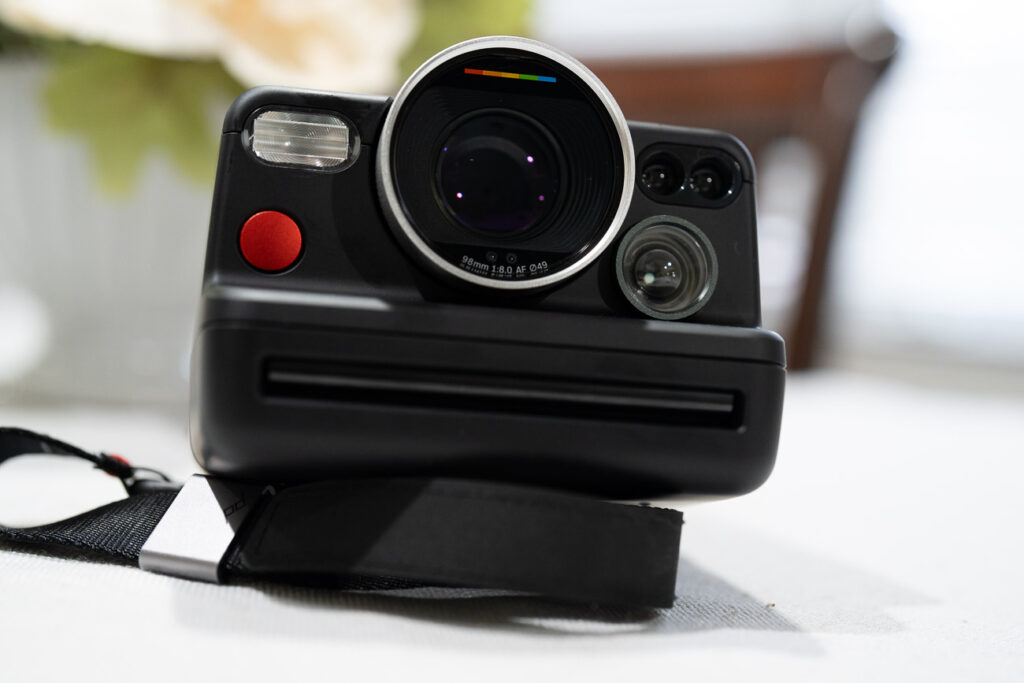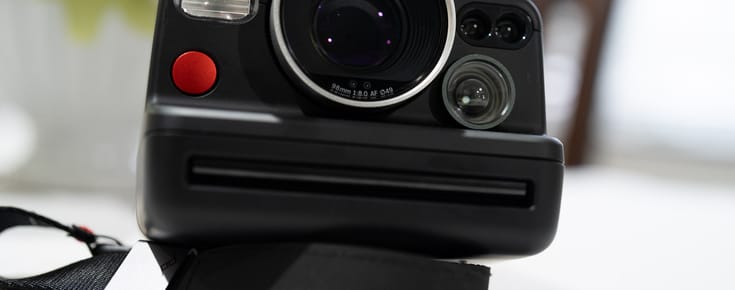The Exciting Arrival of Polaroid’s New Flagship Instant Camera
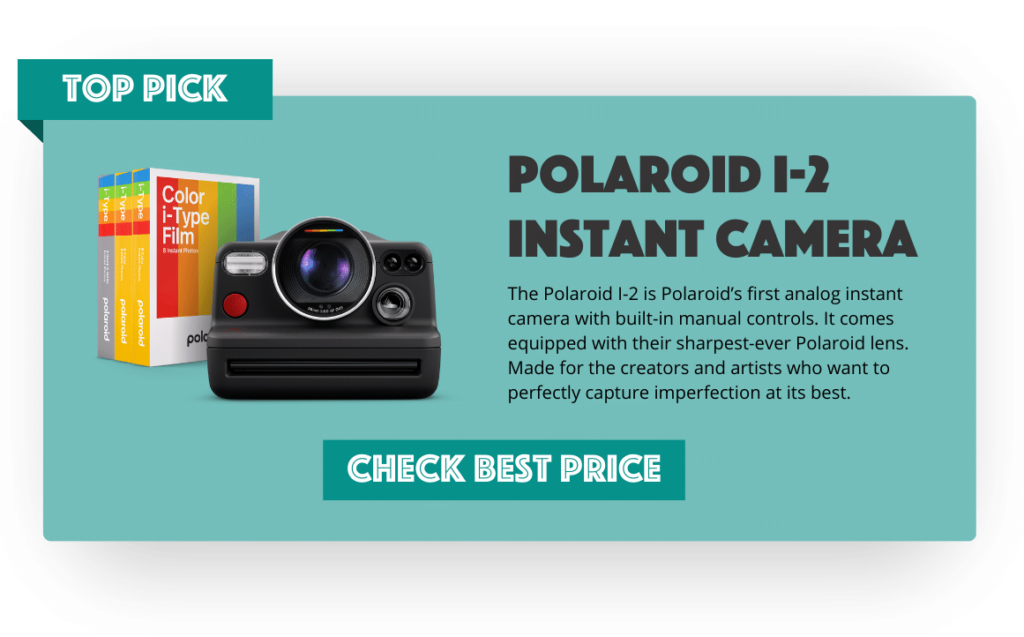
On September 7th of last year, Polaroid launched their newest flagship camera: The Polaroid I-2. One month ago, I bought one and have tested it extensively.
In this post, I’d like to talk about my first impressions, my first-hand review now that I’ve tested it for about one month, and thoughts on if I would recommend this camera to photographers interested in instant photography or travel photography.
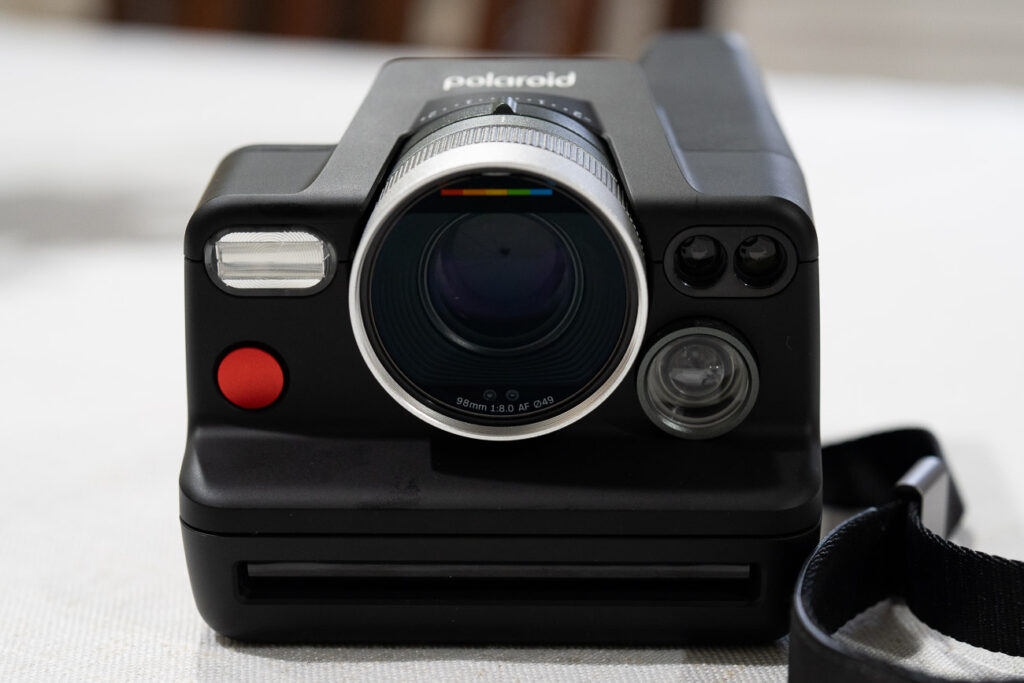
With a $600 price tag, I suppose a lot of photographers are going to wonder whether this camera is worth buying.
(If you shop using my Polaroid Referral Link, you’ll get 10% off your first order!)
Table of Contents
Affiliate Disclosure: This page includes affiliate links which means I may earn a small commission at no additional cost to you should you decide to purchase something from this article.
The I-2 Design: Retro Meets Modern
The Polaroid I-2 is a really unique camera from a design standpoint. It is the first modern-take on a professional Polaroid camera.
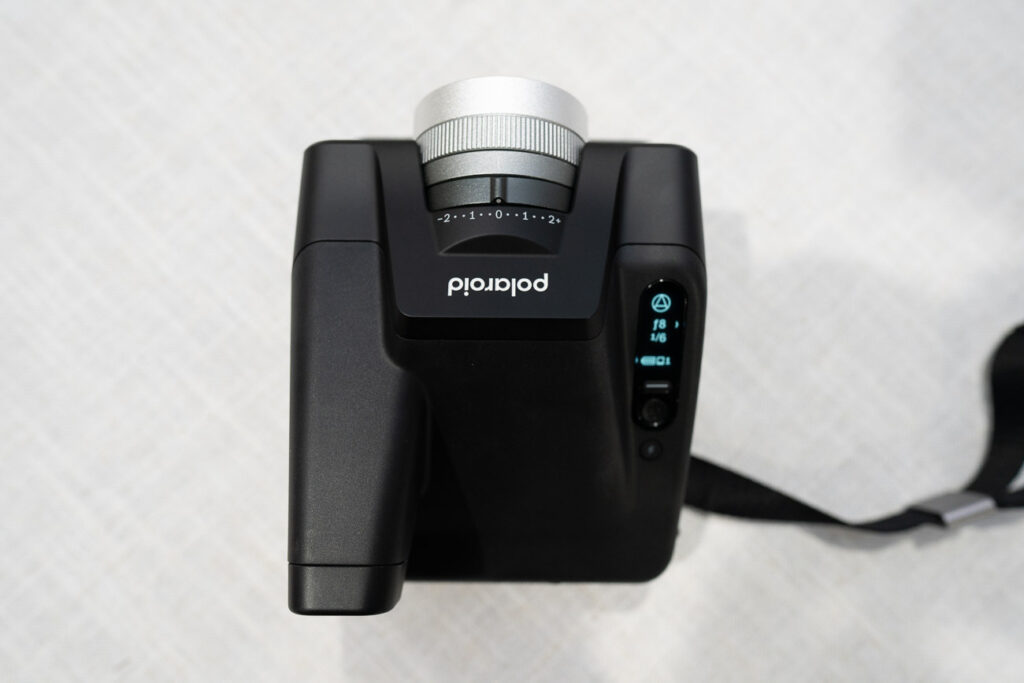
Unlike other modern Polaroid cameras such as the Polaroid Now or Now+, the I-2’s price tag and design position it as more of a flagship from this era of Polaroid’s history.
The Overall Look and Feel of the I-2
The I-2’s new design gives a slight nod to the Polaroid One-Step, while adding a modern digital twist to an analog film camera.
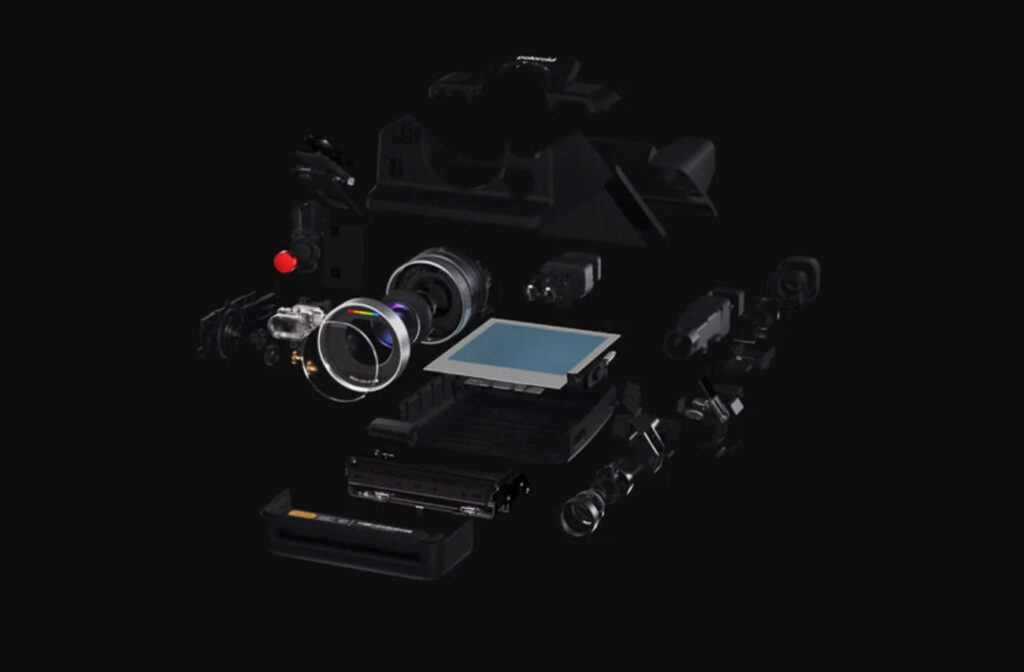
In particular, I really like how this camera bridges the gap between the cameras of the 1900s with our newest cutting-edge camera technology. I think this fusion makes the I-2 camera an appealing proposition for professional instant photographers to weigh.
The Camera’s Build Quality
I have read an alarming number of reviews online about people receiving flawed units with issues such as dust on the inside of the lens: a spot you cannot access to clean yourself. It’s disappointing to hear there could be poorly regulated quality control checks at Polaroid before outbound units get shipped.
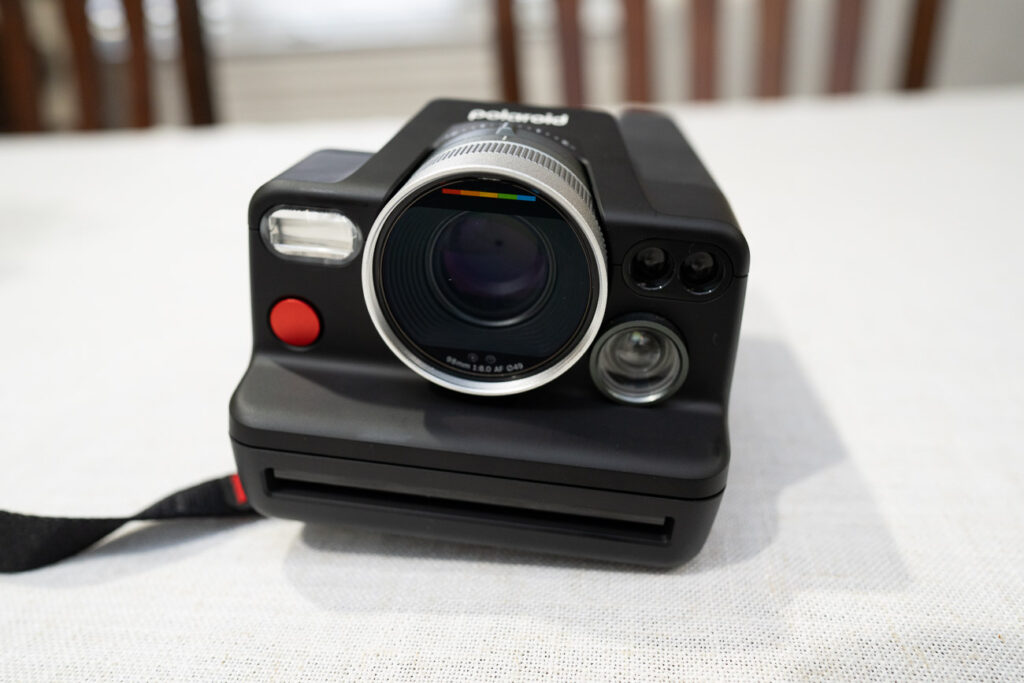
My unit did not arrive with anything wrong with it at first. However, I have since found a small speck of dust that has settled on the inside surface of the camera lens. It seems the air from the film pack entrance may have direct access to the inside of the lens elements.
I am hoping this will not impact image quality in a noticeable way because I cannot get to this part of my lens to clean it. I haven’t seen specs show up on any of my photos so I’ve not taken action so far to return or replace my camera. If this becomes an issue in the next 11 months of shooting, I’m thinking the one year manufacturer warranty may cover it.
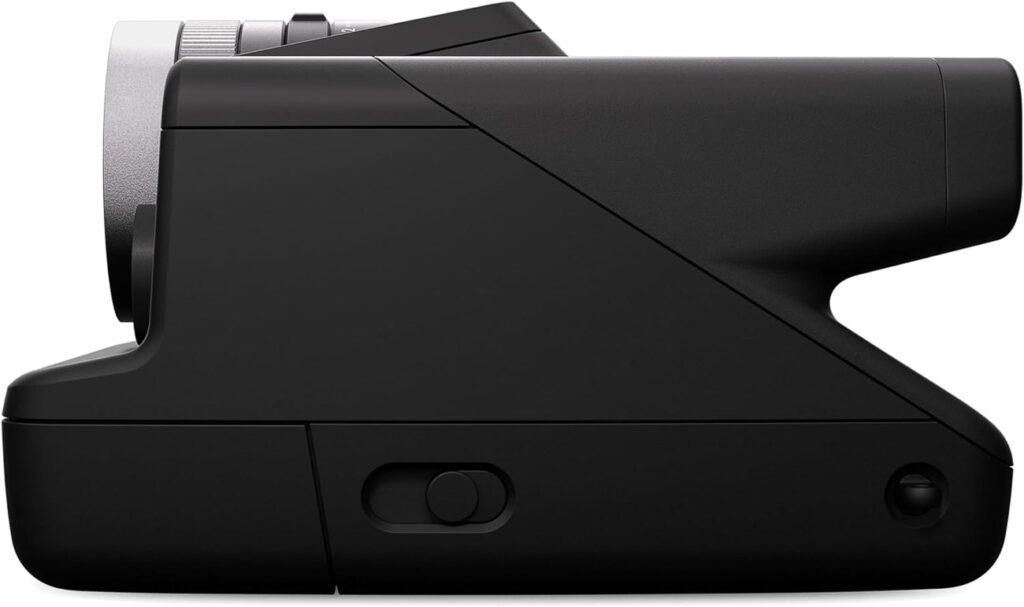
Aside from that, I’m rather impressed with the build quality. Sure, the I-2 is made from plastic and a lot of people may find its construction to be disappointing for that reason. For me, I graciously welcome plastic instant cameras. I try to pamper all of my electronics regardless of the materials they’re made from so plastic only means lighter-weight gear!
Instant cameras require film so you will always need to carry film cartridges and spare packs. I personally wouldn’t want to feel like I’m lugging around a heavy DSLR on top of all that extra baggage.
Technical Specifications and Features
This camera’s engineering is brilliant and impressive. According to Polaroid, every aspect of the I-2 was built with the intention of designing a modern day tool for the creative pursuit of analog photography.
Manual Controls
The Polaroid I-2 is the first analog instant camera with built-in manual controls.
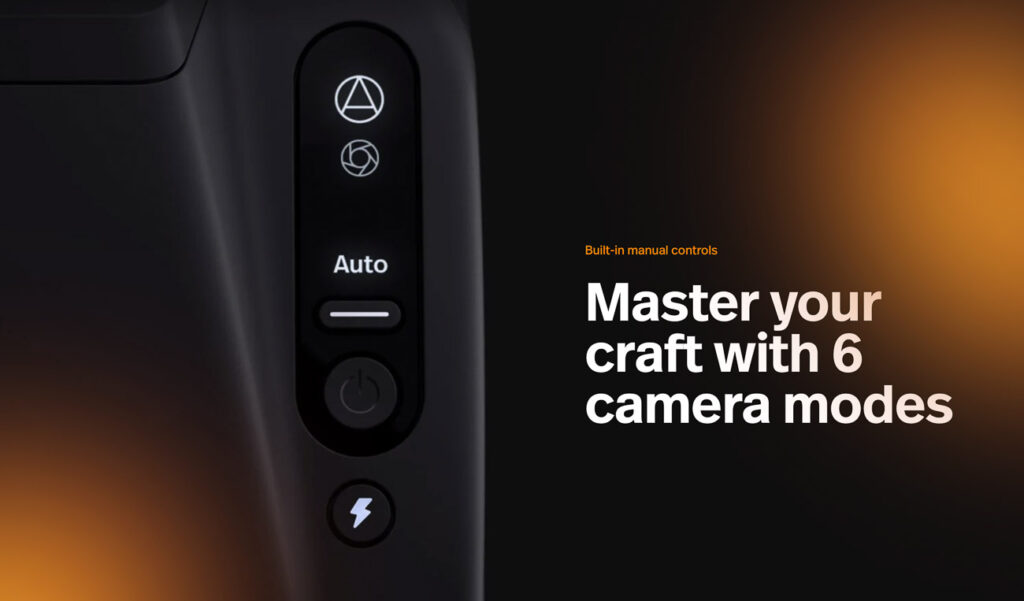
I really enjoy the way this Polaroid camera blends analog and digital technology together; I think this right here may even be the I-2’s biggest claim to fame.
The I-2 offers 6 camera modes while shooting:
- Auto Mode
- Aperture Mode
- Shutter Mode
- Manual Mode
- Multiple Exposure Mode
- Timer Mode
Some reviewers have criticized the display for being too small and too dimly lit. I can see why some people might have issues seeing the display, especially directly under bright light, but I’ve not had any trouble seeing it myself.
(Early examples of experimenting with these different modes can be found in my image descriptions on my Instagram project: The Polaroid Display).
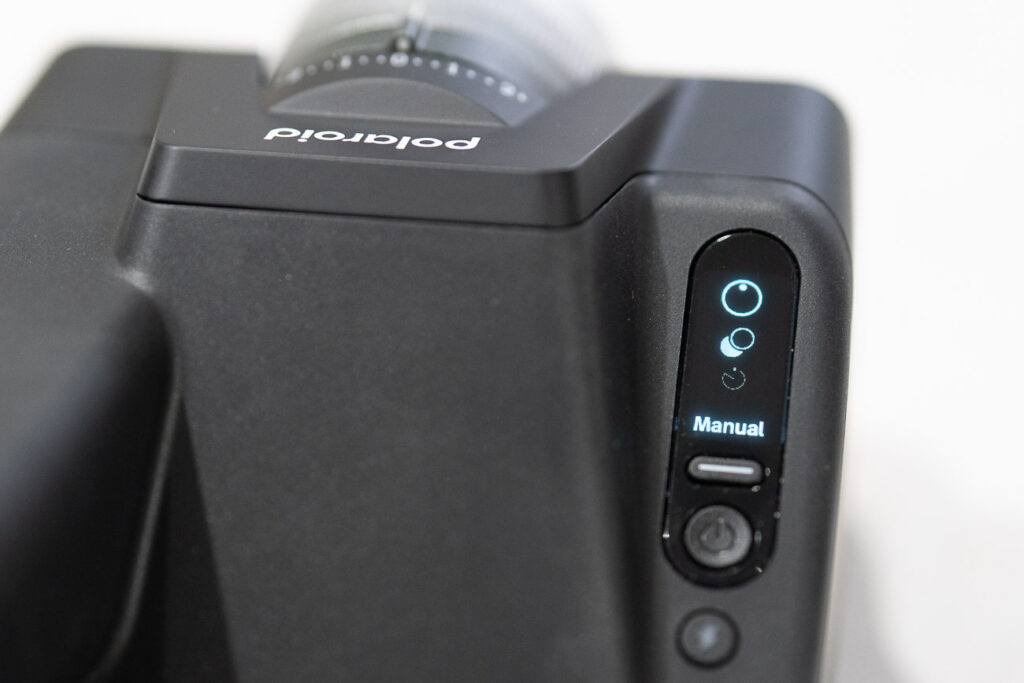
Out of all the modes this camera offers, manual mode is the setting I find myself using the most often. I am trying to learn how to program the camera properly to get proper exposures under different lighting conditions.
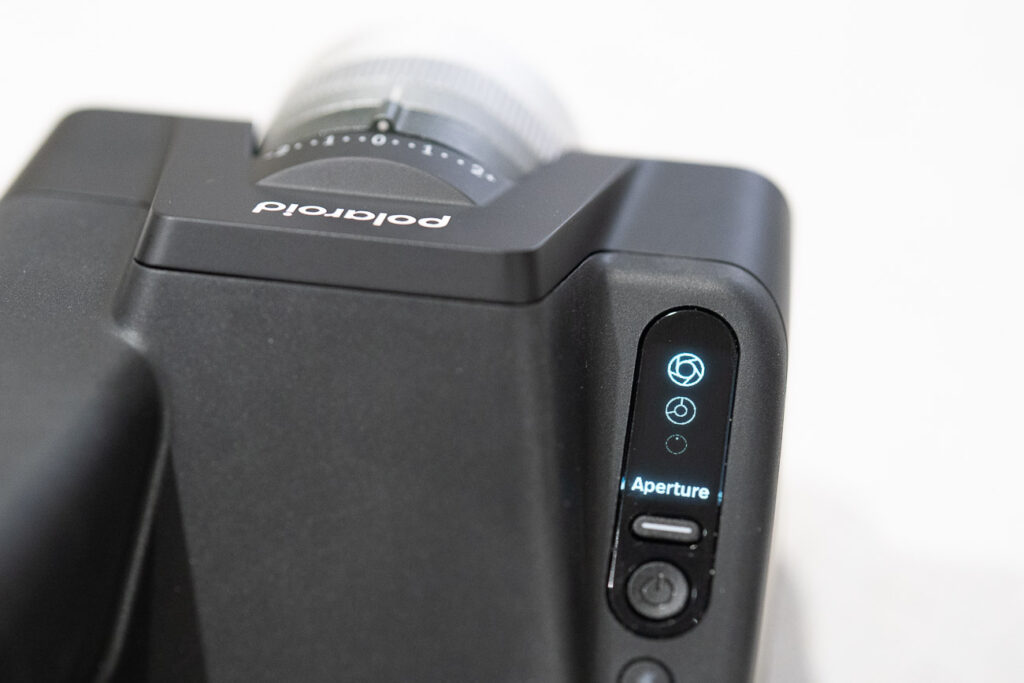
Aperture priority mode has been useful in situations such as while shooting indoors or while trying to capture a shallow depth of field since I can force the camera to use f/8 which takes in the most light the lens is capable of.
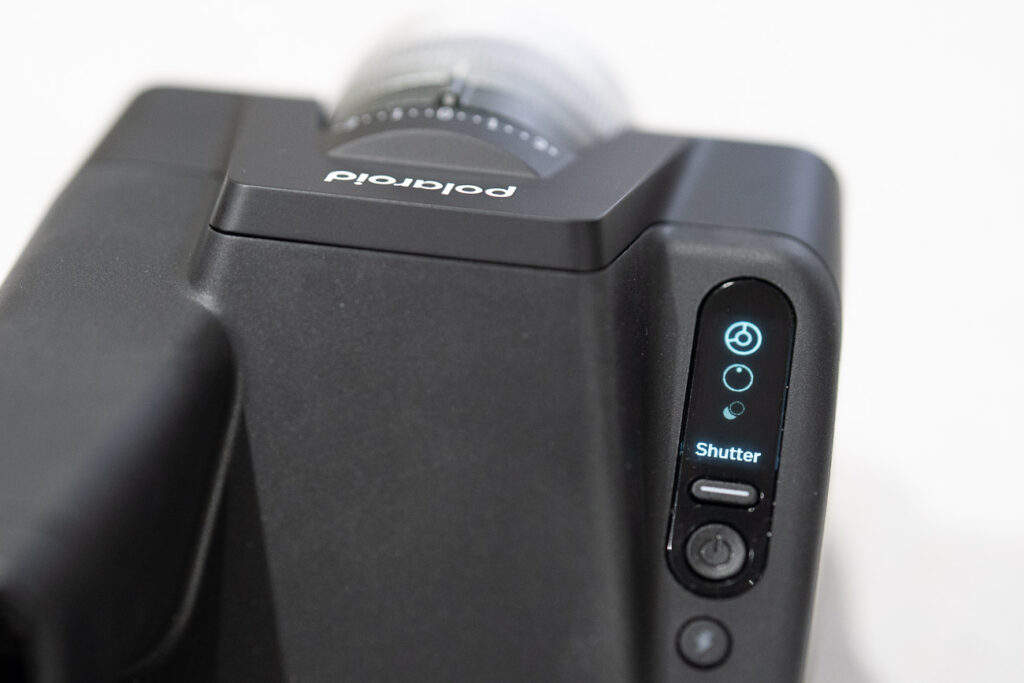
Shutter priority mode I’ve used a little less. I find myself preferring to go fully manual in those situations when I want to control the shutter speed, rather than allowing the camera to choose the aperture in a semi-automatic mode.
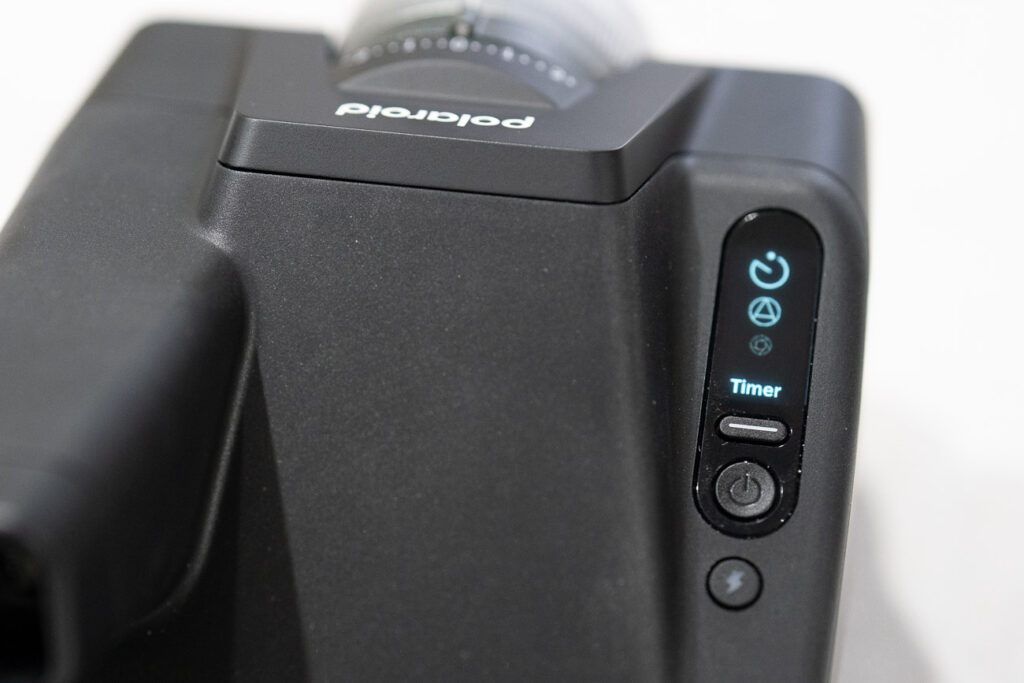
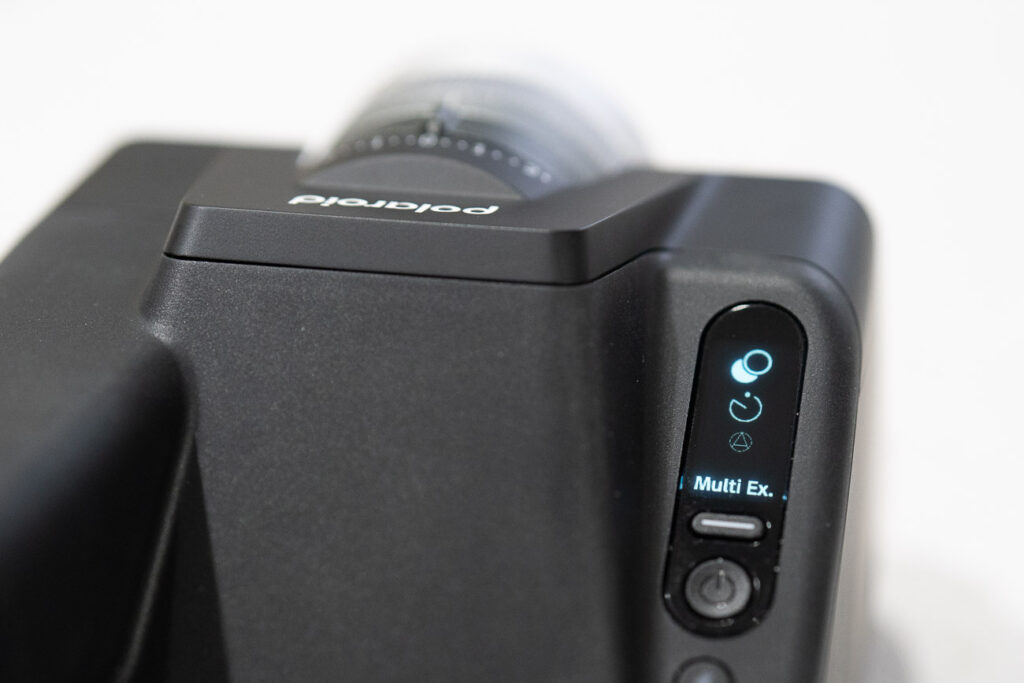
Multiple exposure mode and timer mode are fun to use and I think you’d know when to use those since they require an extra level of planning. It can even do up to 4 exposures on a single piece of film which is pretty interesting to toy around with.
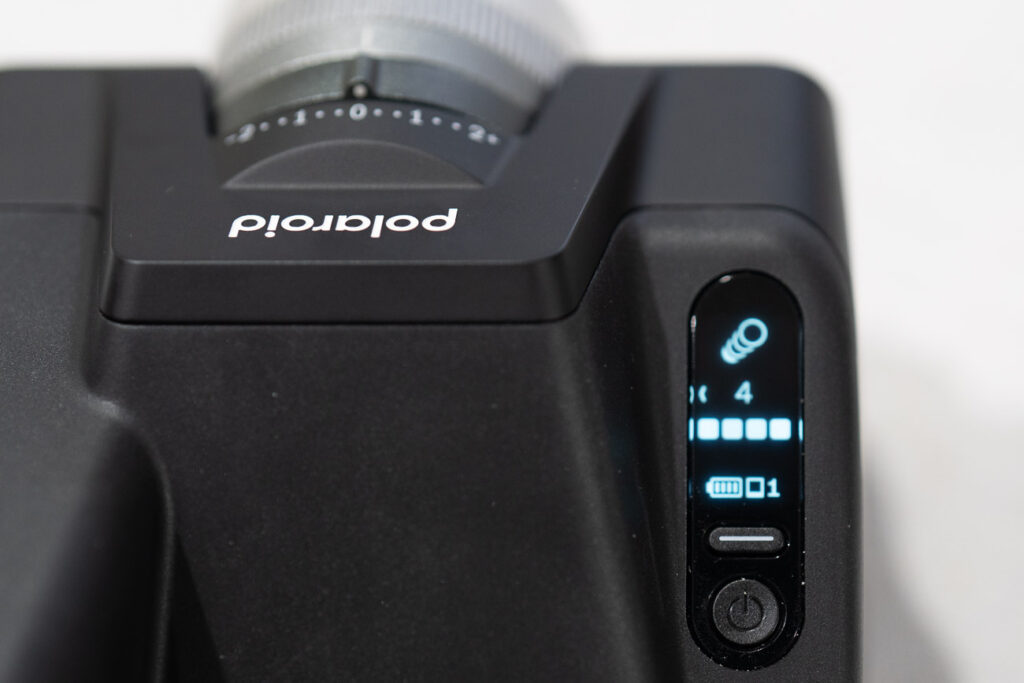
I haven’t had much experience with either of those modes yet, other than a shot or two.
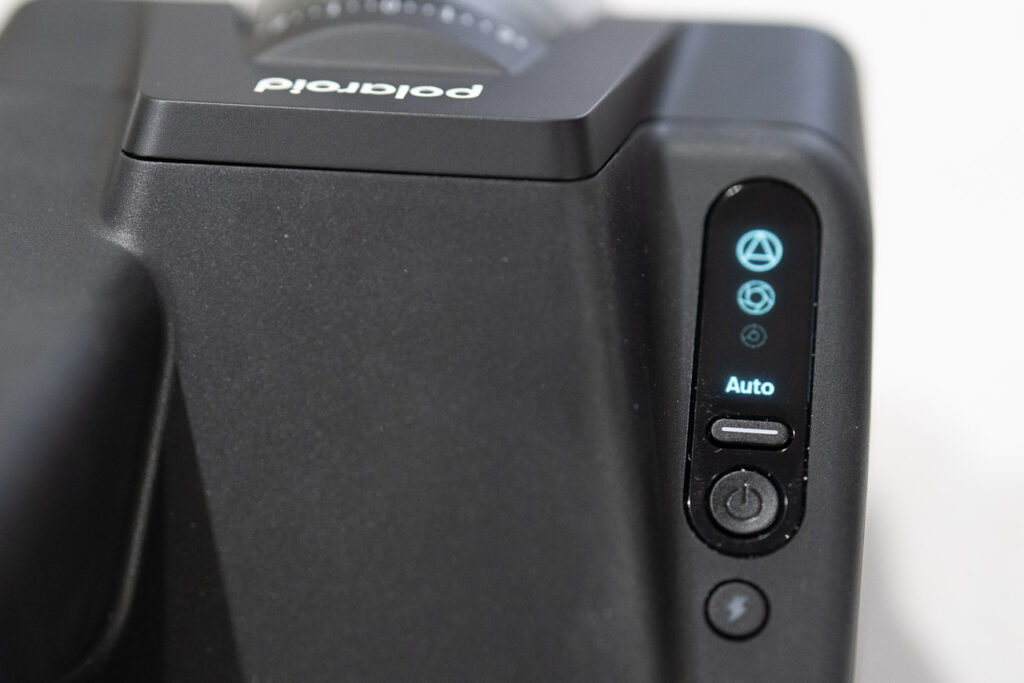
Auto mode performs well when you’re in a hurry!
Later in this post, I’m going to share some tips I’ve discovered to get better photographs while using these settings on the I-2.
LiDAR Autofocus
The I-2 is able to produce the sharpest shots of any Polaroid instant camera as a result of its autofocus 3-lens system, wider apertures, and integrated LiDAR ranging meter.
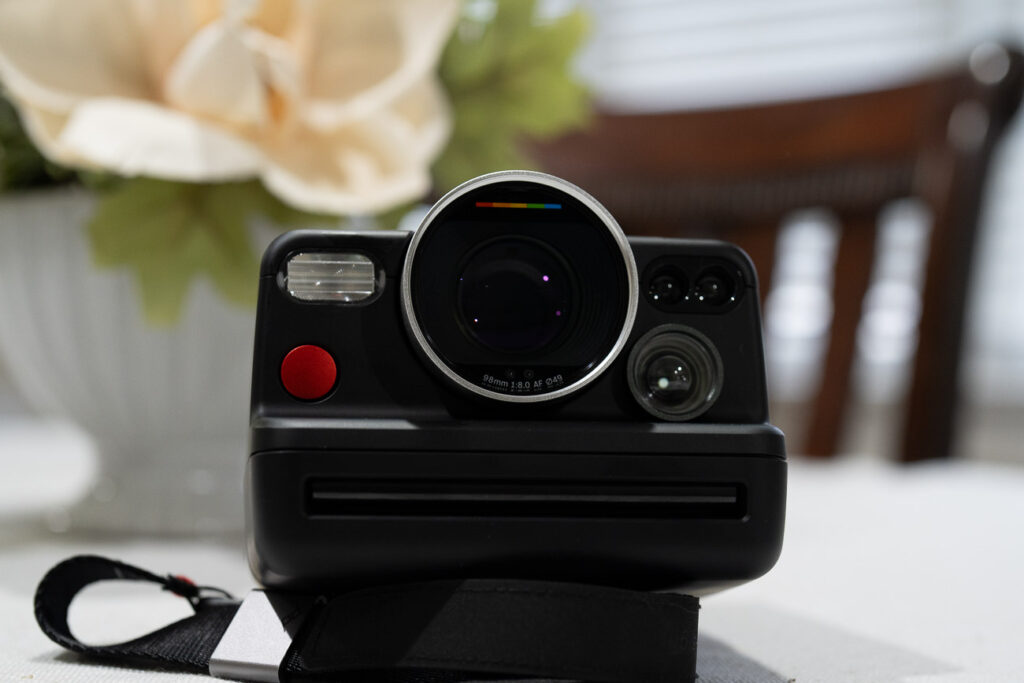
The LiDAR works well, but it also means you cannot focus manually by dial with this camera. You point the camera toward the subject keeping them at the center of the viewfinder, partially press the shutter button to focus on them, keep the button partially pressed while you frame your shot, and then finally click all the shutter button all the way to take the final picture.
It’s a bit harder to predict your results since the camera isn’t an actual SLR showing you what the camera sees. Thankfully, the new LiDAR system works well most of the time.
The 98mm f/8 Lens
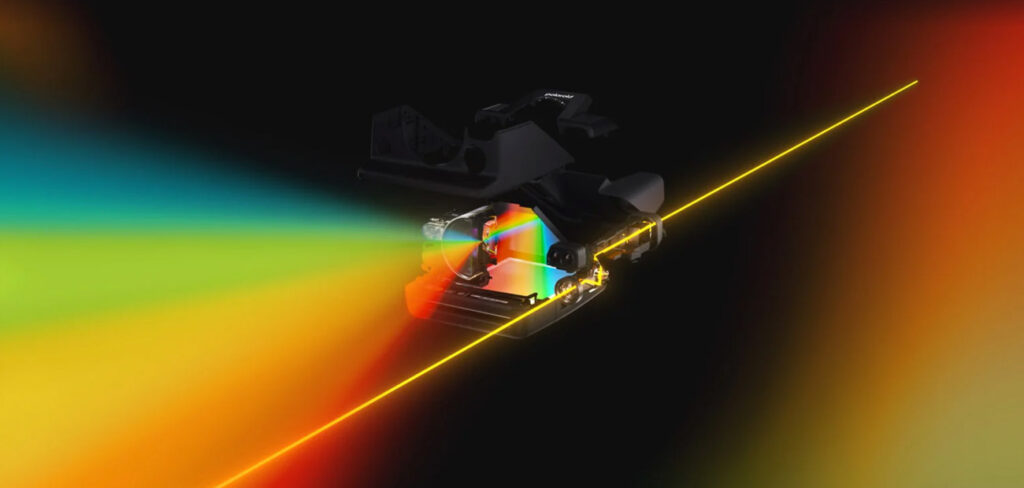
The I-2 shoots with next-level clarity and detail on Polaroid film. The lens is a 98mm f/8 lens (38mm f/3.2 equivalent) and made of three polycarbonate and acrylic lens elements. The apertures range from f/8 to f/64.
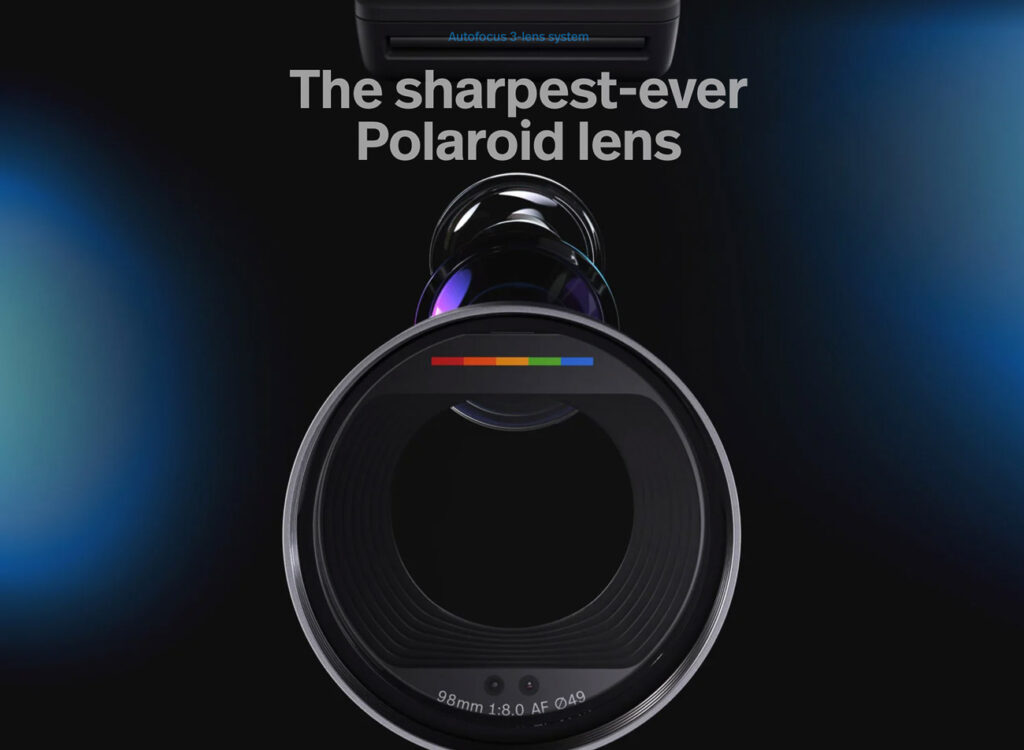
At f/8 on this type of medium, you actually do see bokeh, although it may not be as distinct as you may be used to seeing on modern day full frame digital cameras shooting at something like f/1.2, haha.
It’s also worth noting that the shutter speed range goes from bulb & 30 seconds to 1/250 second, which could be limited for fast action.
Polaroid Film Compatibility
I think one of less talked about but really awesome features with the I-2 camera is its full support for all standard size Polaroid film types: i-Type, 600, and SX-70.
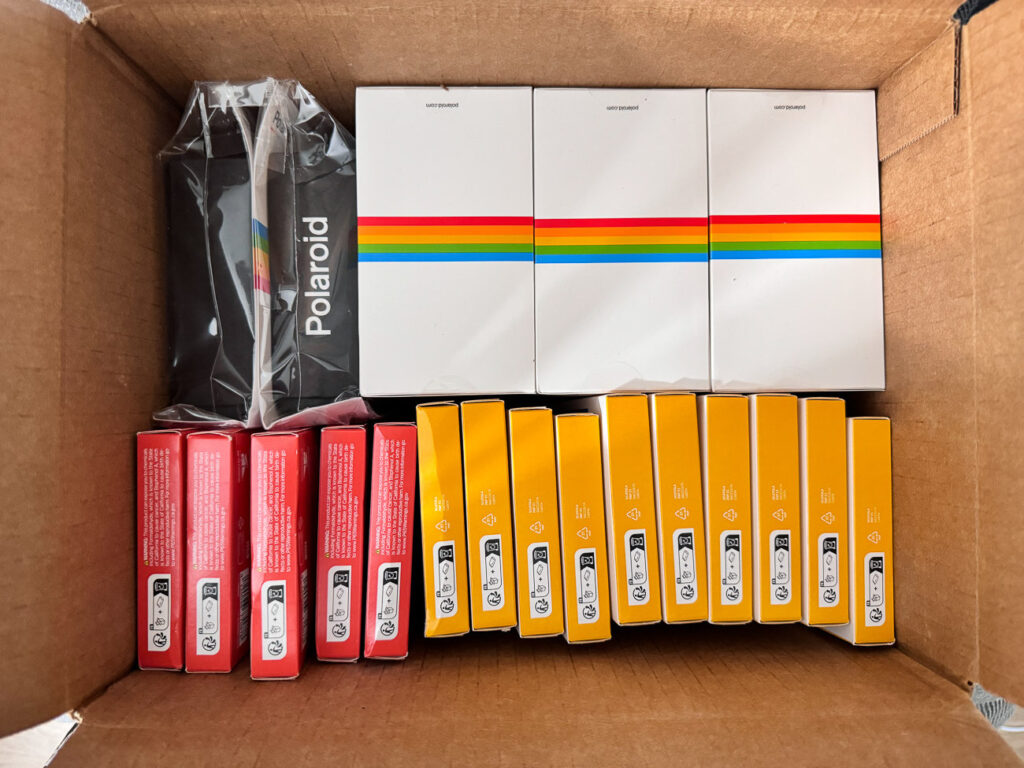
I-Type is the default film type for the I-2. They go hand-in-hand with one another and I’d say this is the film most people will want to use. It’s the least expensive, the most readily available in retail stores, the least wasteful since it doesn’t have extra/unnecessary components like batteries, and it has a film speed rating of ISO 640 which works well in many scenarios.
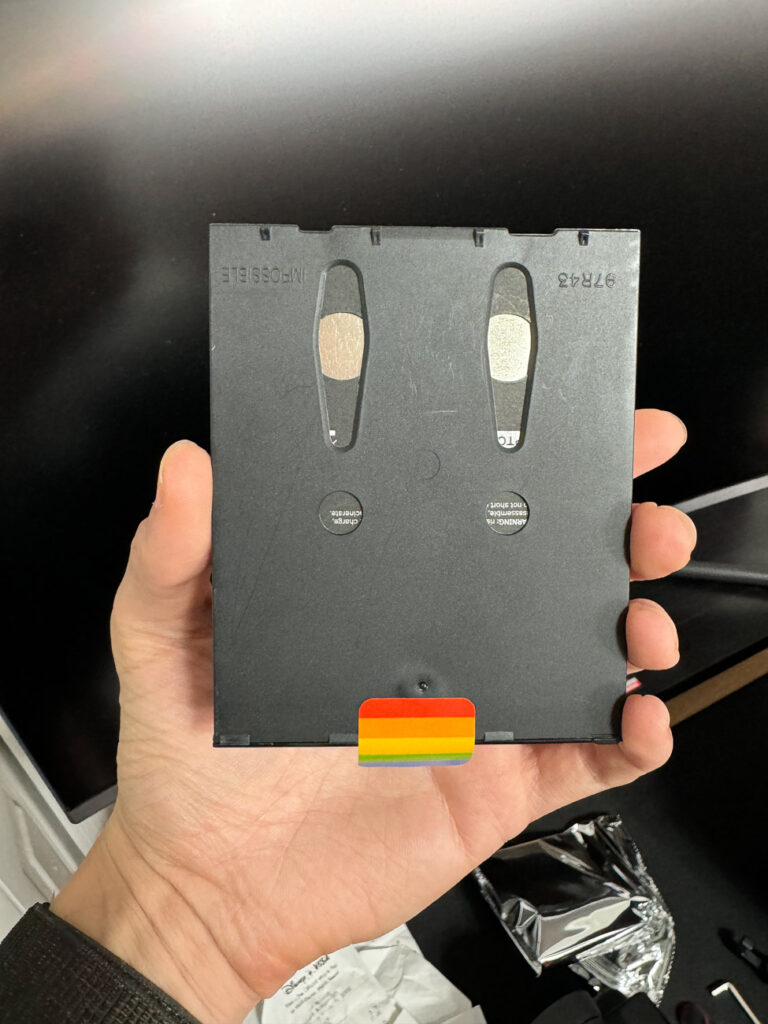
SX-70 film and 600 film are both meant for older cameras (they include the batteries that actually power the cameras) but they work with the I-2 too. SX-70 is fun to shoot with because of its 160 ISO rating, making it ideal for extra bright conditions such as shooting outside during the summer. 600 film is identical to i-Type on a chemistry level but it happens to be sold in fun, vibrant, and interesting color variations.
Bluetooth Connectivity: The Polaroid App
The digital connectivity on the I-2 brings this analog device to the next level with Bluetooth connectivity for extra functionality.

Like magic, open the Polaroid app and your camera will pair automatically. (No fiddling around in your phone settings to pair the devices, thank goodness!)
Once connected, you can completely control your camera settings from your phone if you prefer that method over the small screen and buttons on the camera body.
I’ve found the app to be the most useful when the camera is tripod mounted and you want to reduce camera shake for long exposures or while shooting remotely from a distance.
Hands-On Review of the Polaroid I-2
My decision to purchase the Polaroid I-2 camera was largely shaped by desiring a greater sense of control over my instant photography.
Three days after I bought the much less capable Polaroid Now camera, I immediately recognized how my results were being hindered by the lack of control the Polaroid Now offered. The Polaroid Now is purely a point-and-shoot camera meaning that your results boil down to film, shooting in ideal conditions, and a pinch of luck.
A slightly more capable and expensive upgraded version of the Now exists (a model not readily available in stores near me) called the Polaroid Now+. The Now+ offers more manual control when paired with the Polaroid app, but those controls are not built into the camera’s body meaning you have to shoot with the Now+ paired to your phone if you want to control it.
Sitting at a much higher price point is the new luxurious yet controversial Polaroid I-2 instant camera aimed at professionals and enthusiasts seeking manual controls.
I-2 First Impressions
The I-2 is a stunningly camera right out of the box. (At $600, I was a bit surprised to find mine didn’t come with any bonus film packs like the less expensive Polaroid cameras usually do. The combo pack on Amazon does, however.)

The performance of this camera seems a bit restructured due to the limitations of an imperfect film from Polaroid. It sucks to burn through $1.50 to $2.50 for every single failed photo. Even the $600 I-2 isn’t a magical cure that can guarantee perfect Polaroids.
In the Field Results
As much as I’d love to use this camera on automatic, I’ve had one too many photos come out poorly to justify relying on the camera’s internal metering.
I tend to use a built-in light meter from my iPhone to determine the general ballpark of where my settings should be manually programmed to. From there, I’ve simply developed a level of intuition as a Polaroid I-2 shooter to know what other small adjustments need to be made.
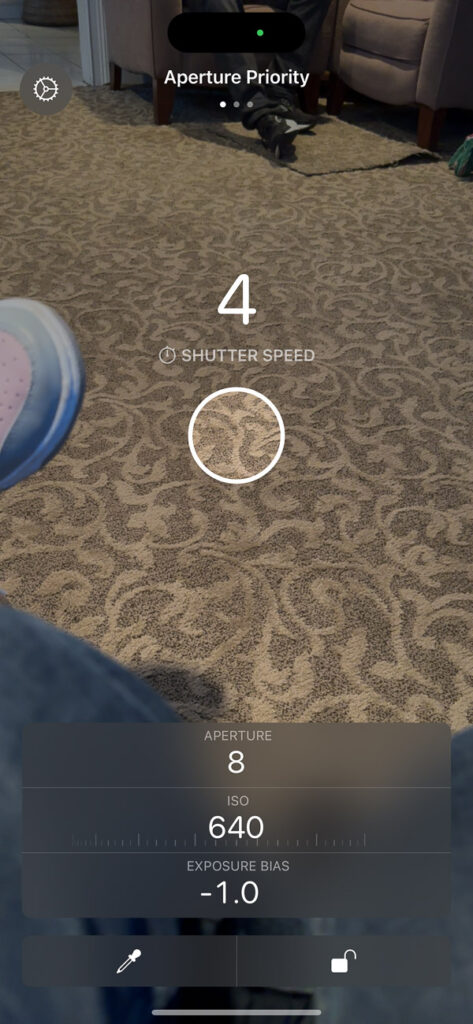
When shooting in fully automatic mode, I’d recommend these guidelines if you find you are struggling to get it right:
- Almost always enable flash if you’re indoors.
- Outdoors, disable flash. You probably won’t need it.
- Indoors, f/8 is usually going to be your best bet.
- Tinker with exposure compensation, but realize this dial has NO IMPACT when you’re shooting in manual mode. It’s only in auto and semi-auto that this dial alters your exposure level.
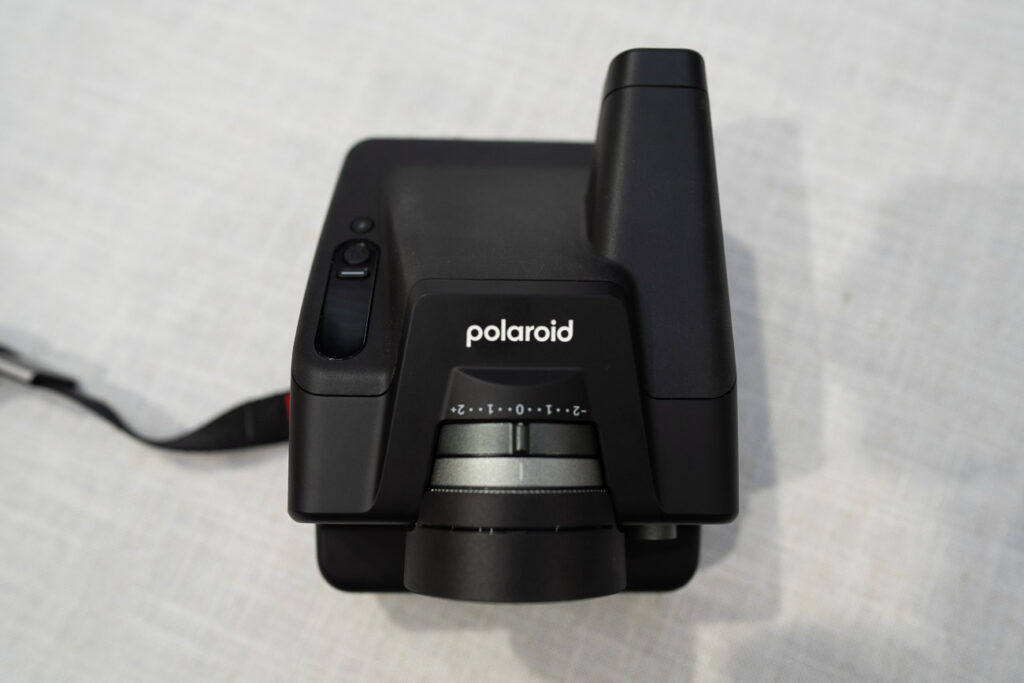
In automatic or semi-automatic modes, you may want to use these adjustments for exposure compensation:
- Between f/8 and f/11, use -1 EV
- Between f/16 and f/22, use -2/3 EV
- Between f/45 and f/64, use -1/3 EV
This is just a general guideline to follow. It doesn’t ensure a proper exposure.
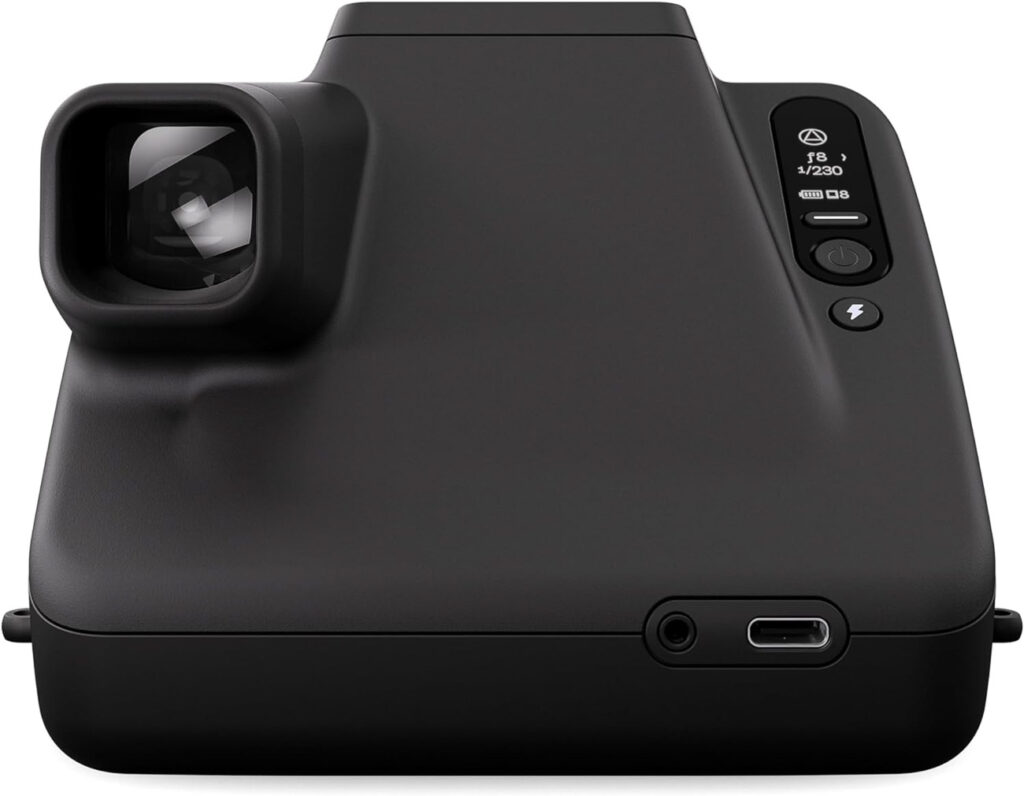
The camera also touts a flash sync port, USB-C port for fast and convenient recharging, as well as a standard tripod-style mount at the base of the device. (I’ve attached this very secure wrist strap to mine)
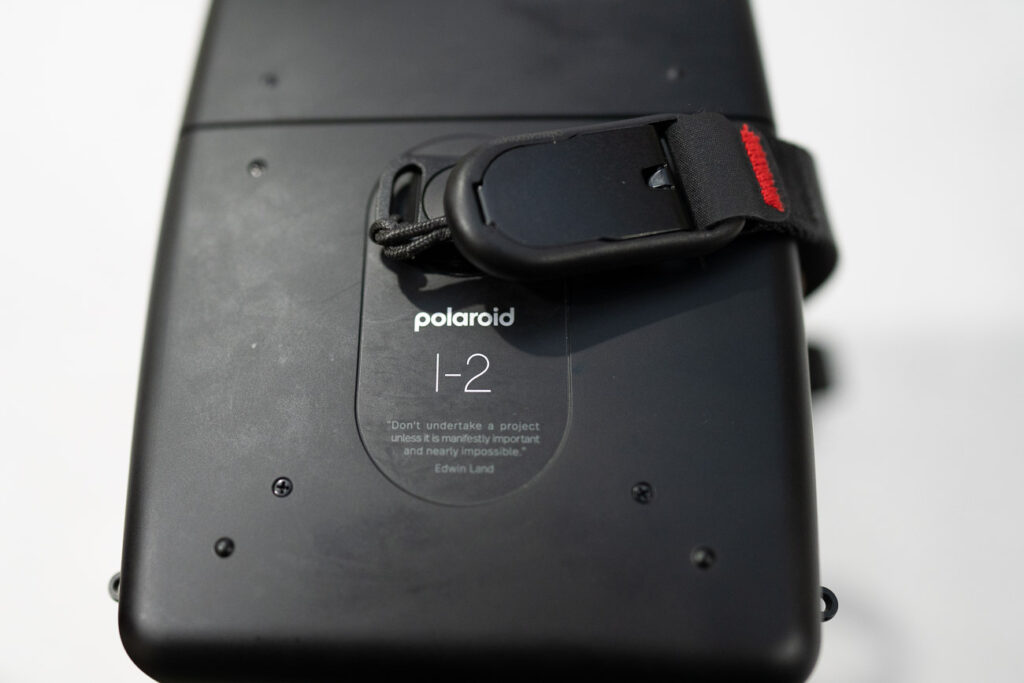
Warning: If your mount attachment is too wide, depending on the accessory you attach, it may block the film door from opening properly…
Instant Gratification
Part of the beauty with instant photography is getting that immediately print from shooting. As I discussed in my previous blog post about instant cameras, there’s something so satisfying from taking a picture and having it fully developed just moments later.
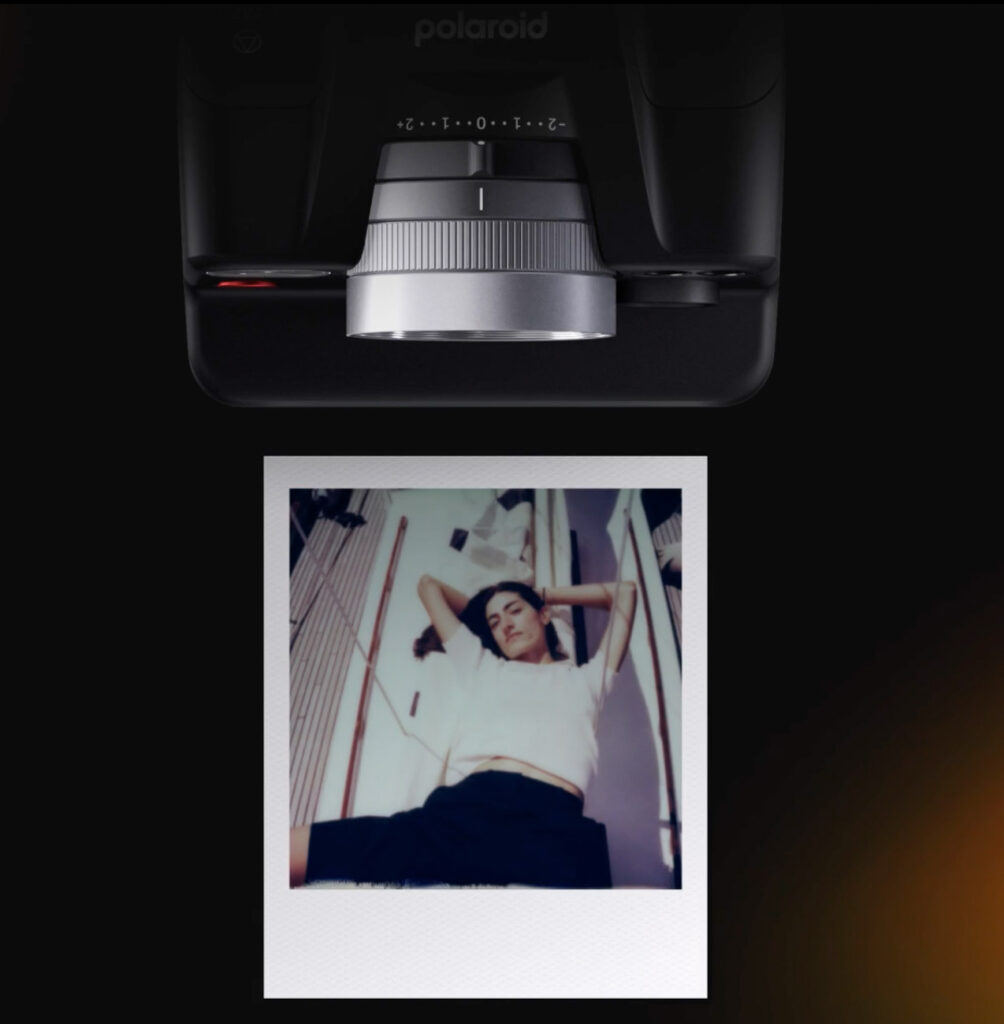
The one issue with the I-2 is that the camera definitely has a learning curve. It’s taken me about a solid month to finally feel familiar and comfortable with all of the settings, how to navigate through them, and how to handle this camera in different lighting conditions to get the perfect shot.
(I’m by no means an I-2 expert, but I’m a lot better now than I was on Day 1!)
If you buy this camera, I’d suggest you buy 5-10 packs of film solely for practice shots before you go out into the field to try to capture important ones!
[buy type film]
Comparing the I-2 to Its Predecessors
So far, the question I’ve been asked the most is whether someone should buy the I-2 or a refurbished and/or modified SX-70 Land Camera. It’s a difficult question to answer, but I think my honest opinion is the I-2.
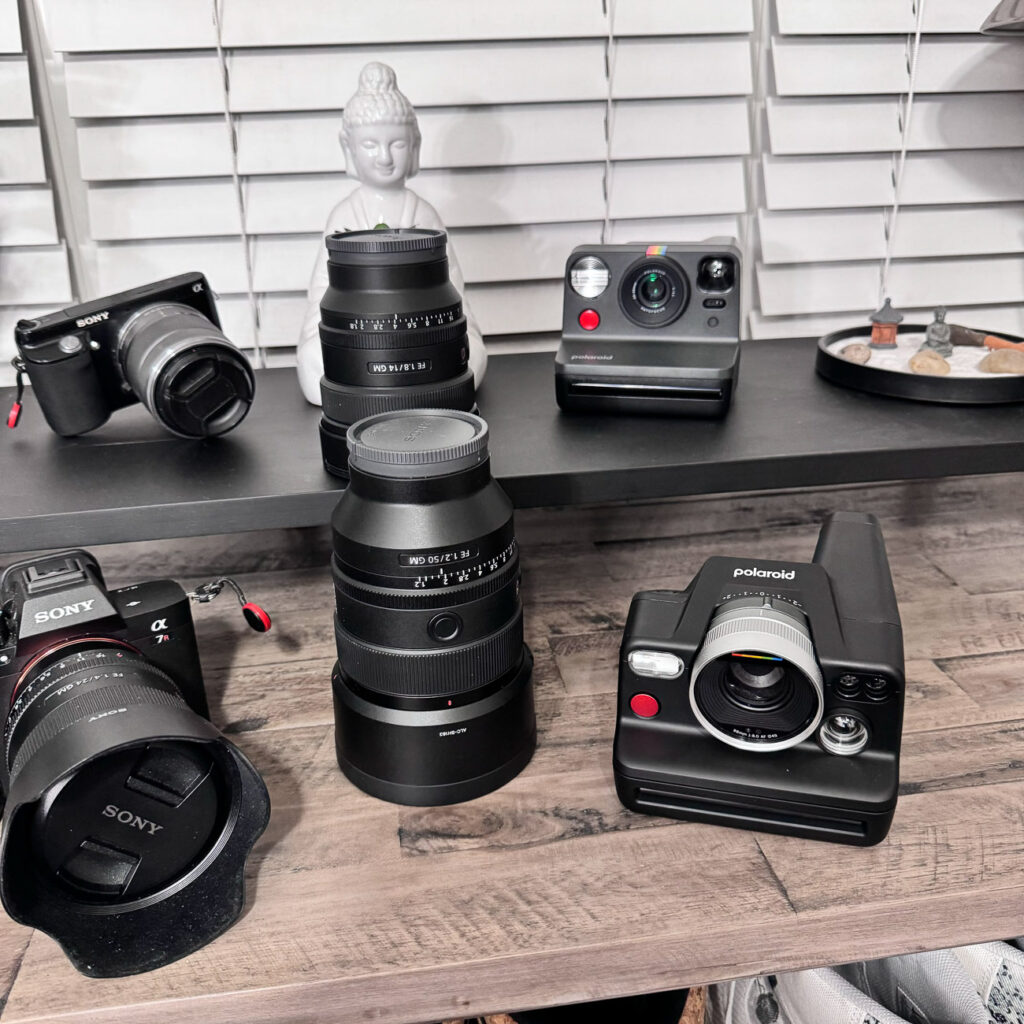
What Sets It Apart
The Polaroid I-2 may be made from plastic, but it’s construction is still solid. It uses both aluminum alloy for key components as well as impact-resistant plastic. I’d say it feels well-built and solid in the hand. I think it could survive a bump or two.
It accepts every single film type, including the inexpensive and less polluting i-Type film! The battery life supports approximately 15 packs and I’d venture to guess the average shooter won’t exceed 2-3 packs in a single day (with the cost, maybe not even 1…) so that’s not going to be a problem for most.
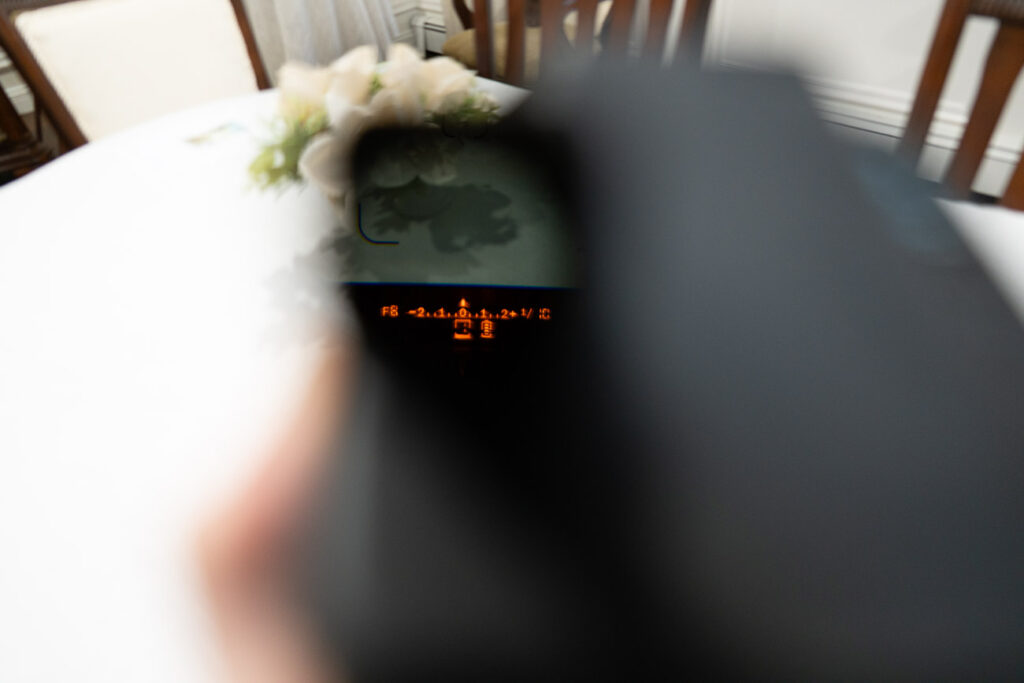
The viewfinder is large and displays a lot of information. If you wear glasses, it can be a bit hard to use the viewfinder. I find it more comfortable to use when I’m wearing contact lenses. I suspect the digital approach to interacting with this camera is going to make it feel more intuitive for younger folks to get acclimated with it.
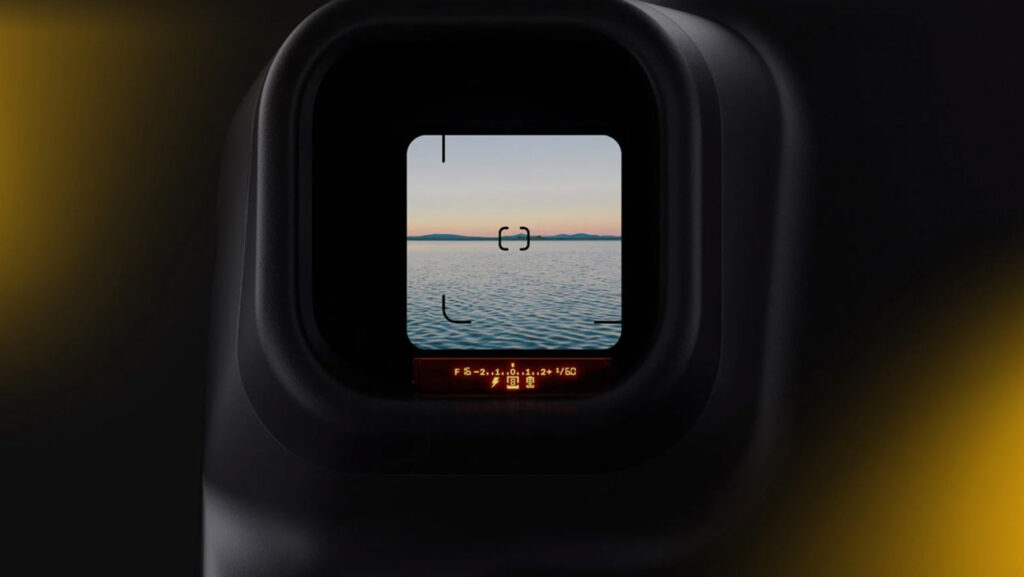
The Negative Reviews
If you look up this camera on any website, I can almost guarantee you’ll find the listing flooded with 1 star, 2 star, or 3 star reviews. Almost no one wants to give it 5 stars.
I think most of those reviews are from people who are upset about the price. It seems those who did purchase it were mostly let down by the fact that they are still wasting shots, an understandable frustration with the cost of Polaroid film. I think a lot of the harsh reviews are being a bit too critical. This is an instant camera that just takes time to learn and understand. Even though we buy these for instant gratification, this one works better when you are patient with it.
Polaroid is almost synonymous with point-and-shoot, and this I-2 camera definitely isn’t that.
Final Thoughts: Why I Love My Polaroid I-2
In case you could not tell, I’m fond on my I-2. I giggled when I saw another reviewer call it the “Ferrari of Instant Cameras.” I think that might be slightly overstating this camera’s positioning, but I see their point.
The Polaroid I-2 brings a lot of highly sought-after features into a modern form factor. Unfortunately, it’s priced just high enough that a lot of instant enthusiasts will probably pass this one up: a dilemma only made worse by the unreliability of Polaroid’s film.
If you’re a die-hard Polaroid fan, I don’t think this camera is overkill. In fact, I think it’s the “ideal” Polaroid camera. You can play with settings right on the device to make sure you are controlling precisely how your final image will develop!
For the Future of Instant Photography
If this camera fell short of your expectations, I’d certainly understand the sentiment. I think side-by-side with the 50 year old SX-70, the I-2 in some ways looks less sophisticated.
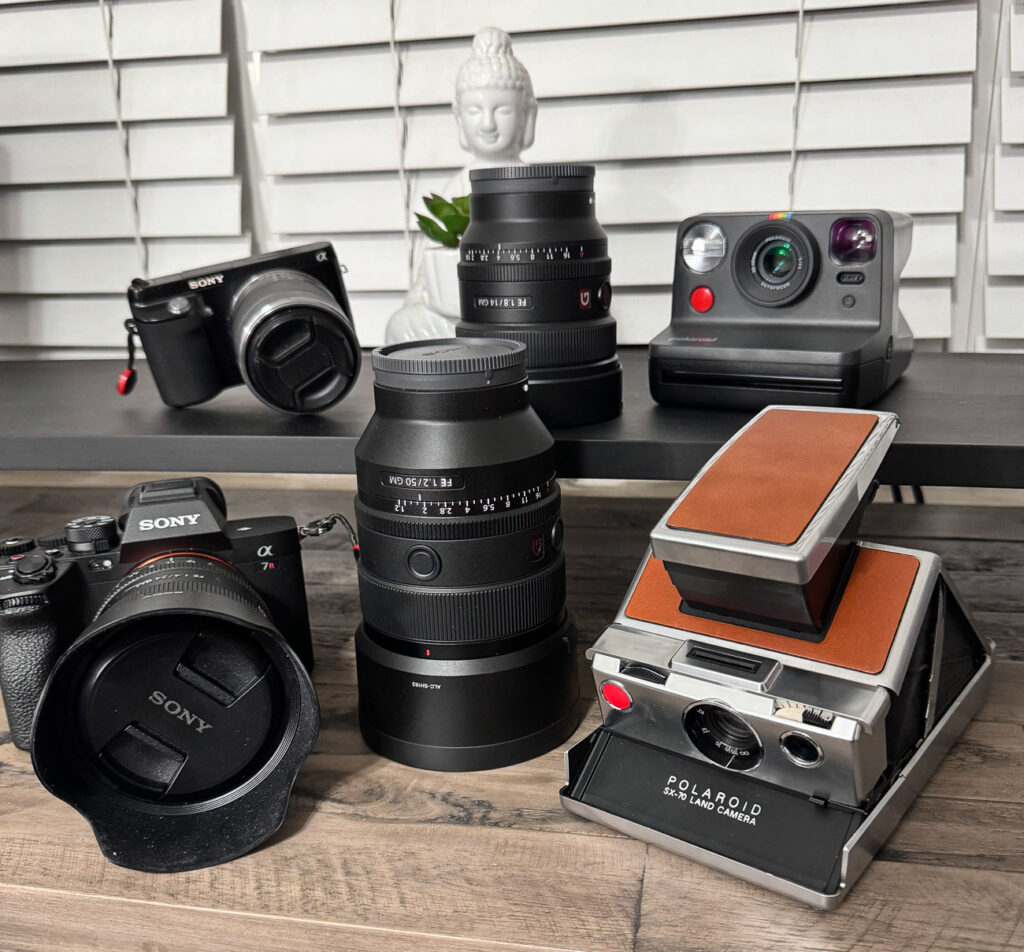
It’s difficult to sacrifice important features like a SLR design useful for framing, manual focusing controls on a camera that touts its manual settings, cheaper plastic construction, and unreliable exposure metering.
However, if we Polaroid fanatics hope to someday see an I-3 announced that fixes all of these issues and more, it’s also up to us to be early adopters to support Polaroid’s journey with continuing their line of cameras. That’s a big reason to buy an I-2.

My Final Verdict
Overall, if you’re willing to look past shortcomings like the non-removable battery, the non-glass lens (something that is actually not even a flaw if you understand modern lenses), and this camera’s viewfinder not being an SLR, I think the I-2 can still be a great camera. If you want a Polaroid camera with the sharpest lens ever and full manual controls, the I-2 is the clear winner.
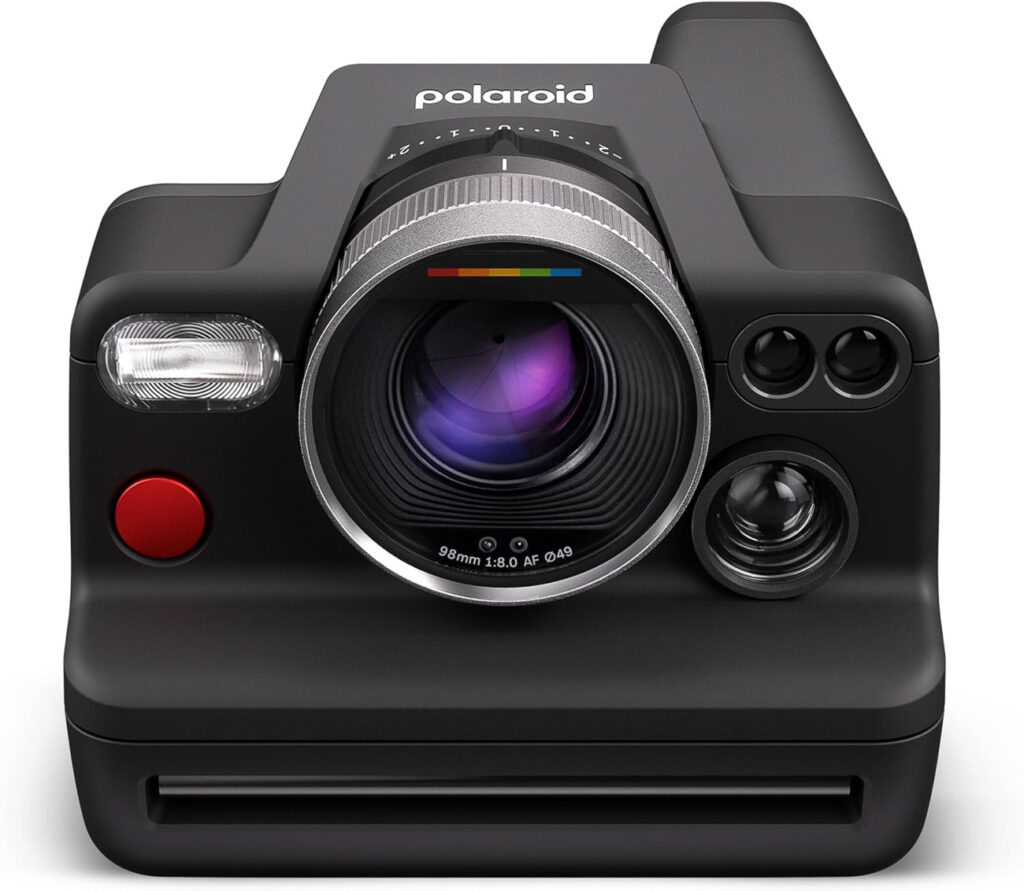
If this is a camera you’re yearning to try, I would purchase one and give it a go. While the $600 price point might be prohibitive for casual users, I can definitely attest to it being significantly better than the entry-level mass market Polaroid Now camera. As long as you plan to take photos with it often and can afford the device, I think it’s worthwhile. If you’re totally new to instant photos, stick to the Polaroid Now.
Polaroid is a company I appreciate and feel good about supporting. Even though I knew this camera might have some flaws, I bought it anyway. That’s what Polaroid means to me: accepting flaws and embracing imperfections.
